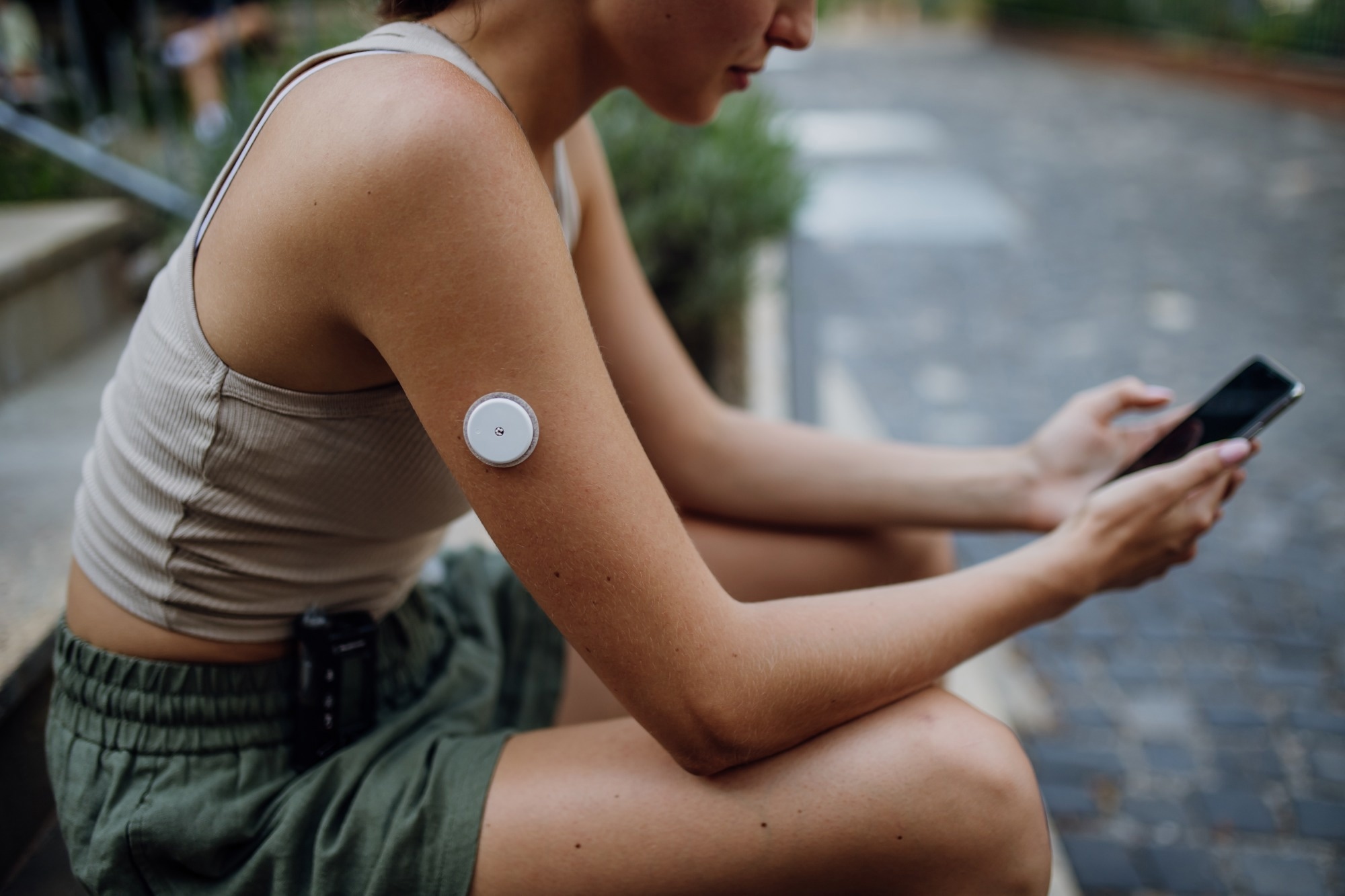A new wearable device combines microneedle and ultrasound sensors to simultaneously monitor glucose, cardiovascular signals, and other biomarkers for more comprehensive diabetes management.

Image Credit: Halfpoint/Shutterstock.com
Diabetes mellitus is a long-term metabolic condition that disrupts the body’s ability to regulate blood sugar. If left unmanaged, it can lead to complications such as cardiovascular disease, kidney damage, and nerve dysfunction.
Devices like continuous glucose monitors have improved the way patients track blood sugar and manage insulin therapy. But glucose levels alone don’t tell the full story. Diabetes affects several physiological systems (metabolic, vascular, and cardiac), all of which interact in complicated ways.
Efforts to expand upon wearable monitoring technologies have been challenging. Most current systems are limited to single-parameter tracking or require multiple separate devices. Some involve invasive procedures that are impractical for everyday use.
Recent innovations in wearable sensors, including minimally invasive microneedles and noninvasive ultrasound imaging, are beginning to overcome these barriers.
A Flexible, Wrist-Worn System
In a study published in Nature Biomedical Engineering, researchers have developed a compact, wrist-mounted device that combines chemical and physical sensors to monitor a wide range of health markers in real time.
The device features a microneedle array made from a biocompatible SU-8 polymer, designed to gently sample interstitial fluid beneath the skin. These microneedles detect biomarkers such as glucose, lactate, and alcohol using electrochemical sensors that are both highly selective and stable.
As well as sensing changing parameters chemically, this device integrates ultrasound transducers that can measure blood pressure, arterial stiffness, and pulse wave velocity. Key indicators of cardiovascular health, these measurements can be taken noninvasively through the skin, allowing for continuous tracking without discomfort.
The system also includes flexible printed circuit boards, power units, and wireless data transmission modules, enabling real-time communication with external devices for analysis and display.
Tested in the Lab and Real Life
The research team first tested each component in controlled lab settings, confirming the sensors’ sensitivity and reliability over time. They then moved to in vivo testing using human volunteers and animal models.
Participants wore the device during typical daily activities, including eating, exercising, drinking alcohol, and resting. This allowed the team to observe how the sensors performed under a variety of dynamic conditions.
Readings from the device were compared to standard clinical tools such as glucose meters, blood pressure cuffs, and breathalyzers to assess accuracy.
Rich Data from Multiple Systems
The wearable system successfully tracked multiple physiological signals simultaneously, showing high agreement with conventional measurement methods.
For example, during exercise, the device recorded rises in both lactate and blood pressure, markers of increased physical stress. After alcohol consumption, it detected changes in blood alcohol levels along with shifts in arterial stiffness and pulse wave velocity, both of which are associated with cardiovascular risk.
This broader view of the body’s responses revealed how metabolic and cardiovascular systems influence one another. This is a significant advantage, as it is difficult to obtain such data from single-sensor devices.
Download your PDF copy now!
Toward Personalised, Real-Time Health Management
One of the device's most promising aspects is its potential to guide personalised interventions. By capturing a real-time picture of multiple health indicators, it may help patients and clinicians make more informed decisions about adjusting insulin doses, managing exercise, or identifying cardiovascular risk factors.
Unlike many existing wearables, this device offers a unified platform for monitoring diverse but interrelated health signals, reducing the need for multiple devices or invasive tests.
Looking Ahead
The researchers plan to conduct larger clinical trials to further validate the device’s performance across broader populations. They also aim to miniaturise the system further and expand its capabilities by including additional biomarkers such as insulin, ketones, and cortisol.
In parallel, they are exploring the use of machine learning algorithms to interpret the complex data the device generates, potentially unlocking even further data on disease progression and personalised treatment options.
Journal Reference
Chang A Y., et al. (2025). Integration of chemical and physical inputs for monitoring metabolites and cardiac signals in diabetes. Nature Biomedical Engineering. DOI: 10.1038/s41551-025-01439-z, https://www.nature.com/articles/s41551-025-01439-z